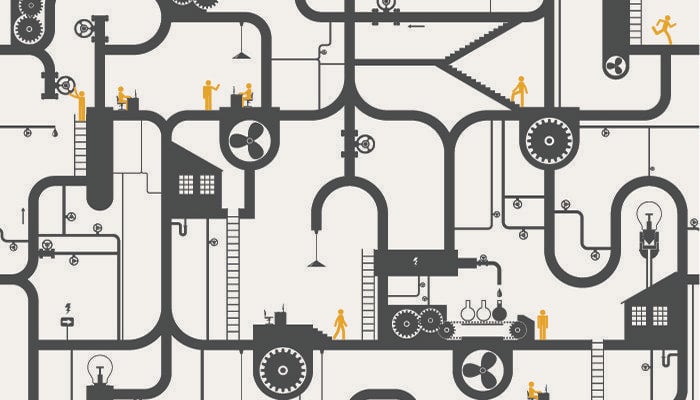Delivering Housing Repairs in the Fourth Industrial Revolution
Jun 25, 2019 • Features • Fleet Technology • fleet • Software and Apps • localz
At this week's Housing 2019 event in Manchester, location and mobile technology experts, Localz, talked about the impact of the IConomy to the field service industry. In this article Localz explains how the field service industry can utilise mobile technology to deliver “uber” style housing repairs and deliver frictionless customer services in the fourth industrial revolution.
The instant revolution
Consumers are sick and tired of impersonalised and inflexible services which do not fit into their routine. They want to be able to schedule an appointment that fits into their schedule and be able to track and adjust it in realtime. eBay, Deliveroo and Uber are all addressing the need for instant booking, tracking and assurance for its customers. These companies are putting the customer at the centre of its service, giving them control, reassurance and convenience and overall building trust. They are setting the benchmark for all industries and now customers are starting to demand the same experiences from every organisation they engage with.
Applying the success from leading brands and incorporating customer and field service engineer pain points, Localz advises on the key steps to ensure frictionless customer experiences in today’s digital age.
- Be digitally available
Providing convenience means being digitally enabled on various platforms, this includes customers being able to book an appointment via a laptop, tablet or smartphone and smartwatch. Alongside device enablement they also want to be able to book an appointment via different means including, email, telephone, on a brands app and in the future via voice recognition. It is vital that you stay on top of the latest technology and ensure you know how your customers want to interact with you.
1. Confirm and reassure
Once an appointment is booked you need to continually remind and reassure your customers that you are coming. It is vital to provide customers with regular updates throughout the appointment life-cycle, from confirmation to receiving the appointment, to a reminder the day before and the morning of including real-time updates of an ETA.
2. “On my way”
On the day of the appointment provide the customer with a real-time location tracker of the service provider so they can check the platform and are deterred from calling the contact centre. If there are going to be any changes to the appointment then the platform can be triggered to automatically provide push updates on the service providers ETA.
British Gas has seen no-access, failed appointments fall by 20% by using “On my way” notifications. Customers are more informed and therefore aren’t forgetting appointments or rescheduling if needed to.
The ‘Find my Engineer’ solution provides the ultimate transparency by giving customers access to real-time location tracking when the operative is en route. Accurate ETAs are provided, which take live traffic conditions into account. Localz own research shows that 65% of consumers say that viewing their service provider’s ETA is the most important feature on a service provider’s mobile app. This is particularly important in the housing sector as the length of appointments can vary greatly. By providing real-time updates enables customers to track the engineer and get on with their day so they are not stuck within the confines of their own home for hours.
4. Empower engineers
It is time that organisations start cutting out the middleman. A real-time operational dashboard needs to be put in place so both the team on the ground and in the office can see live updates of appointments. Engineers will be able to click and see in one touch full details of the job so they can be prepared ahead of each visit.
By enabling for two-way communications between service engineers and the customer will help to streamline appointments. Two-way communications make it easy for customers to tell you and your operatives important information without having to join a call centre queue. Provide contact centre staff with the same transparency and real-time tracking, so they can give a consistent and reliable message if a customer still decides to call.
OVO Energy’s engineers have cited that using two-way communication has an increase in customer satisfaction. By enabling engineers and customers to directly speak to one another it removes the middle man, which can be a frustrating experience for both parties.
5. “Rate Your Service”
One of the key ingredients to successful communication and one that is often forgotten is the power of listening. Asking consumers to “rate” and feedback on the service will lead to consumers feeling important, cared for and if you respond accordingly listened to.
This is something that Uber has done very well. By allowing consumers to rate their driver it not only leads to customers feeling heard but it enables the organisation to increase the safety of the solution.Both outcomes of providing the score is both of importance to the consumer and the company alike. In environments where interactions are frequent and where 'promises' can be fulfilled reliably and repeatedly trust can be established.
To find out more about Localz’s solutions click here.





















 Field Service News is published by 1927 Media Ltd, an independent publisher whose sole focus is on the field service sector. As such our entire resources are focused on helping drive the field service sector forwards and aiming to best serve our industry through honest, incisive and innovative media coverage of the global field service sector.
Field Service News is published by 1927 Media Ltd, an independent publisher whose sole focus is on the field service sector. As such our entire resources are focused on helping drive the field service sector forwards and aiming to best serve our industry through honest, incisive and innovative media coverage of the global field service sector.
Leave a Reply